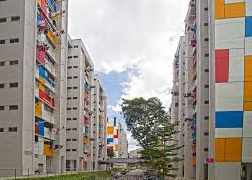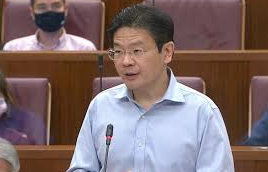New initiatives aim to create a more inclusive environment for persons with disabilities in Singapore.
SINGAPORE: The latest Enabling Masterplan, launched on Wednesday (Aug 17), outlines ambitious plans to improve accessibility for persons with disabilities (PWDs) across various sectors, including buildings, road crossings, and government websites. This initiative reflects Singapore’s commitment to creating a more inclusive society.
Starting this year, the Ministry of Transport and the Land Transport Authority will install 24/7 on-demand audible traffic signals at 325 pedestrian crossings in ten town centres with higher populations of residents with visual impairments. Additionally, any buildings undergoing renovations will soon be legally required to ensure basic accessibility for PWDs during the construction process.
By 2030, the government aims for all high-traffic government websites to be accessible, up from the current 61%. These are just a few of the 29 recommendations included in the fourth iteration of the Enabling Masterplan, which is structured around three strategic themes: creating inclusive physical and social environments for PWDs, strengthening support for lifelong learning, and enabling PWDs to live independently.
Senior Parliamentary Secretary for Social and Family Development Eric Chua, who co-chairs the steering committee behind the masterplan, emphasized the importance of gathering insights from over 300 PWDs, caregivers, and professionals in the disability sector. This feedback has informed the eight-year plan, which extends three years longer than previous five-year masterplans, allowing for a more sustainable approach to implementing initiatives.
“It doesn’t mean that the plan we have announced today is going to be set in stone,” Mr. Chua stated during the launch at AWWA’s new home and day activity centre. “In fact, we see quite a bit of scope for us to evolve,” he added, highlighting the need to adapt as societal perceptions and technologies change.
Empowering PWDs in the Workforce
The previous masterplans have already led to significant advancements in early intervention and education for children with special needs, improved employment opportunities for PWDs, and enhanced public transport accessibility. The fourth masterplan will expand on this by addressing concerns about what happens to PWDs after they complete their education, ensuring they receive adequate support for independent living and employment.
The steering committee has set an aspirational goal of raising the employment rate of PWDs from the current 30.1% to 40%, which would involve matching jobs and providing additional support for approximately 10,000 more PWDs. To encourage this change, the committee aims to shift public perceptions regarding the hiring of PWDs, promoting awareness of available support programs for employers.
Creating Inclusive Living Spaces
In collaboration with the Ministry of National Development, the Ministry of Social and Family Development plans to design alternative housing and care models that enable PWDs to live and age in their communities. This approach addresses the challenges of an ageing disability population and fosters a sense of belonging.
To facilitate social engagement and learning opportunities, the government will pilot Enabling Services Hubs in communities, with the first hub to be announced shortly. Mr. Chua emphasized the importance of translating positive attitudes toward PWDs into meaningful actions, urging the public to learn appropriate behaviors and reactions to foster inclusivity.
“The recommendations have been accepted by the Government, and now the real work begins,” Mr. Chua concluded. The full report of the Enabling Masterplan is available for public review, inviting feedback and suggestions to help shape a more inclusive Singapore by 2030.








